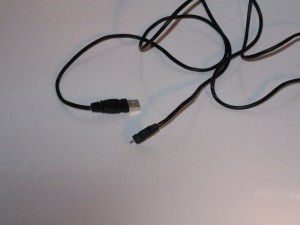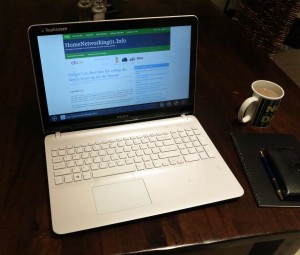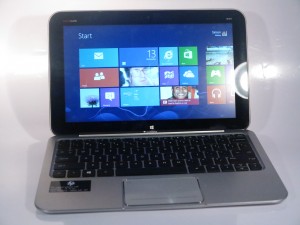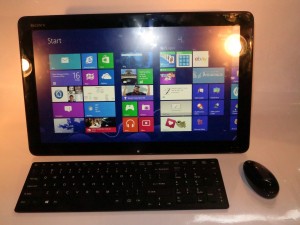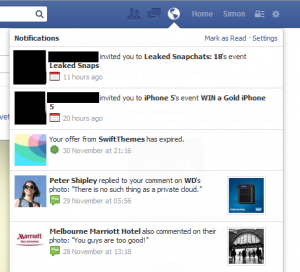Article
Even small businesses can benefit from a standard operating environment
My Comments
 What is a standard operating environment?
What is a standard operating environment?
A standard operating environment is a set of hardware and software specifications required for computer systems operated in a business or other organisation. This can range from a particular hardware build for the regular computers, through a particular version of the computer’s operating systems to the mix of application software that runs on these computers including the version of these programs.
Small businesses who run a few computers may find the concept of a standard operating environment very foreign because their IT situation tends to work on an organic basis. This is typically where computers and peripherals are purchased one at a time on an “as-needed” basis.
Where is this often seen?
Large organisations who maintain many computers run the computers on a standard operating environment in order for make the task of deploying or supporting these computers easier for the organisation’s IT staff. Some of these organisations also place value on the standard operating environment as a way to assure system and organisational security along with employee productivity.
Similarly, IT contractors and value-added resellers who set up computing environments for small businesses such as POS systems for retail work on a standard operating environment when supplying these systems. This is more so if the systems are being offered on a “turnkey” basis.
Why is this advantageous
The advantages offered by a standard operating environment mean that it is easier to diagnose problems that crop up on these computers, train users on how to operate these computers and deploy any newer computers.
This is facilitated with practices like installing software on a new computer from a baseline disk image that you keep or specifying to an IT supplier the make-up of your machines that you are buying. The use of group policies and similar functions supported by the desktop operating systems can be used as a tool to lock down the standard operating environment.
There is also the ability to test new software on a few machines to “smoke out” any problems with the software or test-drive new hardware specifications before you call it as being part of your environment.
Can multiple standard operating environments exist?
You can create multiple standard operating environments for particular computer-usage functions.
One way this can be achieved is through a “modular” standard operating environment that has a baseline specification for hardware, operating system, Web browser, security, office-productivity and other software; along with a list of other software that matches the computer’s function such as accounting, video-editing or other software. This would work well if your computing equipment is based on the same platform such as Windows or Macintosh.
Another way would be to create a few standard-operating-environments which can pertain to particular hardware platforms such as creating a Windows environment, an Apple Macintosh environment and an Android tablet environment. These would appeal to organisations that work with different platforms based on their prowess.
What to avoid
Inability to roll out system-improvement patches and updates
A mistake that can be easily made with a standard operating environment is to “freeze” the software specification to the exact version you are running. This habit may preclude the deployment of critical updates, security patches and other incremental revisions that are necessary to keep a system that runs smoothly and is secure in your business environment.
There was a situation where a video-surveillance system with cameras that ran older firmware that couldn’t work with anything newer than an older version of Windows server. This system’s server which was on its own network with the cameras had been compromised due to a weakness in the software.
To avoid this, make sure that when you call a standard operating environment, you use the major versions of the software as your defined versions. As well, assess the standard operating environment every few years so you can run newer software in to the equation.
Systems that shirk the established software interfaces and device classes
Another mistake that can occur is avoiding updates or upgrades that don’t touch established interfaces for hardware and software.
Currently, we are seeing class-wide interface specifications for particular hardware and software like the Mass-Storage Class, Audio Class and Human Interface Device classes for USB connections; A2DP/AVRCP Profile, Headset/Handsfree Profile and Human Interface Device Profiles for Bluetooth; along with SMB/CIFS, DLNA and WebDAV for network-based setups. These have allowed the use of devices that do the job better with a standard operating environment because it is feasible to upgrade the devices to suit one’s needs without deploying new software that could break the setup.
This is also important as newer hardware that will supersede your existing hardware becomes part of the equation and you find existing hardware approaching the end if its useful life. Here, you may have to run software components to allow your legacy software to benefit from the industry standards or, as I have mentioned before,, factor in the industry standards when you revise the standard operating environment.
How to go about it
This could be applied by using “downgrade rights” for operating systems that are supplied with computers if your organisation runs an earlier version of that operating system. It can also include buying equipment from the same dealer such as a business-focused computer store rather than Harvey Norman or the like.
Also identifying a “mix” of hardware and software that is working together yet is able to take the latest updates and patches that assure security, stability and performance can be a useful method for determining a standard operating environment. For a small business, this could mean identifying a computer like a laptop that you can tolerate as a “testbed” computer and using that to take updates before organising mass updates.
Similarly you can use this machine to test-drive new software versions to see how they run and whether it is worth it to deploy them in to the standard operating environment. This, along with flexibility to use particular productivity-boosting tools avoids the creation of a standard operating environment that is reminiscent of that ordinary old Ford station wagon.
One way that I would prefer for establishing a standard operating environment is to call a baseline software specification for each computing platform you are using i.e. Windows, MacOS X, etc. This covers the operating system and the desktop productivity suite that you run with. As for the class of computer to use, you could call a baseline specification for the different hardware classes such as desktops, laptops, etc. For function-specific software, you can then call a mix of software that does the job to full effect and this may be assisted by an IT contractor which focuses on the business class you are representing.
Conclusion
The idea of a standard operationg environment can come in to its own when your business matures and you start to acquire a significant number of computers and could be a way to describe a business “growing up”. But there needs to be a proper way of going about it and allowing for software performance, security and stability updates.

